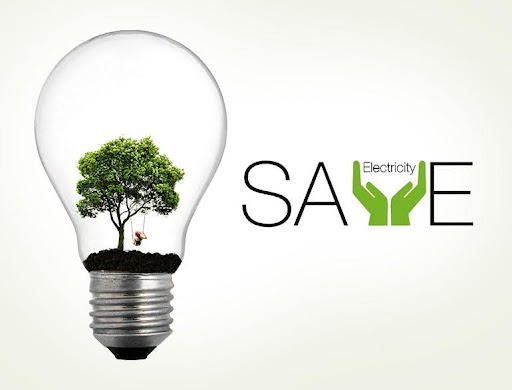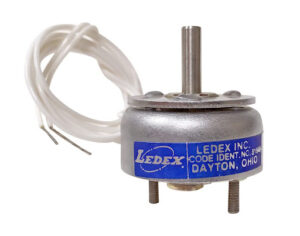
Improved Energy Efficiency and Sustainability
Energy efficiency is now an important issue for consumers and companies worldwide. Due to rising energy bills and growing environmental concerns, there has never been a more significant opportunity to identify solutions to cut energy consumption. Using rotary solenoids is one often ignored area where substantial savings can be realized.
These electromechanical devices are widely used in various industries, from manufacturing to automation, and their energy consumption can significantly impact your overall energy costs. By optimizing the performance of rotary solenoids, companies can reduce their energy usage, lower their energy bills, and minimize their carbon footprint. This helps the environment and enhances the bottom line by reducing operational expenses.

How to Understand the Basics of Rotary Solenoids?
Before exploring the potential savings, it’s essential to understand rotary solenoids and how they work. Rotary solenoids are devices that convert electrical energy into rotational motion. They consist of a coil of wire wound around a cylindrical core, which, when energized, creates a magnetic field that interacts with a plunger or rotor, causing it to rotate.
These devices are commonly used in applications requiring precise rotational motion, such as valve actuation, door locks, and various industrial automation processes. While they offer excellent performance and reliability, traditional rotary solenoids can be energy-intensive, primarily when operating continuously or in high-duty cycles.
Benefits of Energy-Efficient Rotary Solenoids
Advancements in technology have led to the development of energy-efficient rotary solenoids designed to consume less power while delivering the same level of performance as their traditional counterparts. According to a 2023 report by Parker Hannifin, a leading manufacturer of motion control technologies, some of their new energy-efficient rotary solenoids can achieve up to 50% reduction in energy consumption compared to traditional models.
These energy-efficient models typically incorporate advanced materials, optimized coil designs, and improved thermal management systems, reducing energy consumption without compromising performance.
Here are the benefits of energy-efficient rotary solenoids:
Reduced Operating Costs
One of the most significant advantages of switching to energy-efficient rotary solenoids is the potential for substantial cost savings. These devices can significantly reduce energy bills by consuming less energy, translating into significant long-term savings. The amount you can save will depend on the number of rotary solenoids in use, their duty cycles, and the energy rates in your area. However, many companies and homeowners have reported annual savings ranging from hundreds to thousands of dollars after making the switch.
Improved Energy Efficiency and Sustainability
In addition to cost savings, energy-efficient rotary solenoids contribute to improved energy efficiency and sustainability. By reducing energy consumption, these devices help lower your overall carbon footprint and promote more environmentally friendly practices.
As businesses and individuals desire to become more eco-conscious, adopting energy-efficient technologies like these can demonstrate a commitment to sustainability and responsible resource management.

Extended Lifespan and Reduced Maintenance
Another benefit of energy-efficient rotary solenoids is their potential for extended lifespan and reduced maintenance requirements. Operating at lower temperatures and less stress on their internal components, these devices can last longer and require less frequent maintenance or replacement. This translates into additional cost savings over time and reduced downtime for your operations.
How to assess the Cost-Benefit Analysis of Energy-Efficient Solenoids?
To determine the potential savings from switching to energy-efficient rotary solenoids, you’ll need to consider several factors, including:
- Number of rotary solenoids in use: The more solenoids you have, the greater the potential for savings.
- Operating hours and duty cycles: Solenoids that run continuously or have high-duty cycles will consume more energy, making the switch to energy-efficient models more impactful.
- Energy rates: The energy cost in your area will determine the magnitude of your savings.
- Replacement and installation costs: While energy-efficient rotary solenoids may have a higher upfront cost, the long-term savings often justify the investment.
Consider 100 traditional rotary solenoids operating 50% duty cycle, 8 hours/day, five days/week, consuming 20 watts each at $0.15/kWh. Annual energy cost: $3,120. Switching to energy-efficient solenoids (10 watts) reduces cost to $1,560, saving $1,560/year. Over the solenoids’ lifespan, cumulative savings can be substantial, potentially exceeding initial investment costs.
What steps are involved in Implementing Energy-Efficient Rotary Solenoids?
Transitioning to energy-efficient rotary solenoids involves several steps. Here’s a guide to help you through the process:
1. Audit Current Usage
Conduct an audit of your rotary solenoid usage to identify areas with the highest energy consumption. This will help prioritize replacements and maximize savings.
2. Research and Select Energy-Efficient Models
Look for rotary solenoids specifically designed for energy efficiency. Consider the power rating, durability, and compatibility with existing systems.
3. Calculate ROI
Determine the return on investment (ROI) by comparing the upfront costs of new solenoids with the expected energy savings. This will help justify the expenditure and plan for budget allocation.
4. Plan the Transition
Develop a phased implementation plan to replace existing solenoids with energy-efficient models. This minimizes operational disruptions and spreads out costs over time.
5. Monitor and Optimize
After installation, continuously monitor the performance of the new solenoids to ensure they are delivering the expected savings. Make adjustments as necessary to optimize efficiency.
FAQs
How long does it take to see a return on investment (ROI) when switching to energy-efficient rotary solenoids?
The ROI period can vary depending on the initial cost of the solenoids, the number of units replaced, and the energy savings achieved. Generally, businesses can start seeing returns within 1-3 years.
Can energy-efficient rotary solenoids impact the performance of my equipment?
Energy-efficient rotary solenoids are designed to maintain or enhance performance while reducing energy consumption. To avoid performance issues, ensure you select high-quality solenoids from reputable manufacturers.
Conclusion
Switching to energy-efficient rotary solenoids can provide significant annual savings on your energy costs while contributing to improved sustainability and environmental responsibility. By carefully evaluating your current rotary solenoid usage, operating conditions, and energy rates, you can accurately estimate the potential savings and make an informed decision about upgrading to these energy-efficient alternatives.
With the ongoing technological advancements, investing in energy-efficient rotary solenoids is a smart choice to benefit your bottom line and the planet.




More Stories
Meet Rita Case – recipient of 2024 NAMAD Lifetime Achievement Award
Navigating the Electrifying Future of Automotive Batteries – Insights from Focus CEO on Lithium, Graphene, and Emerging EV Tech Trends
TTI IP&E – Europe supporting the logistics and engineering of IP&E components